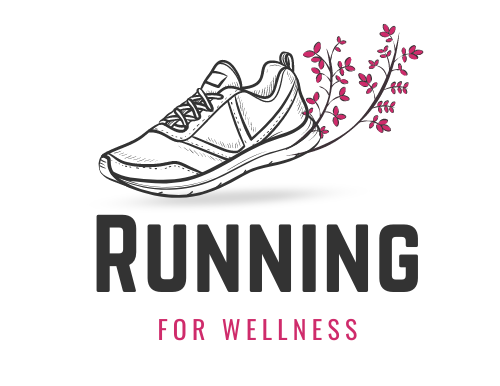Long runs are a key part of any serious runner’s routine, whether you’re building toward a marathon, chasing your next PR, or just love the rhythm of the road.
But let’s be honest: the soreness, heavy legs, and overwhelming fatigue that sometimes hit after logging the miles? Not so great. If you’ve ever struggled to bounce back after a long run, you’re not alone.
Muscle fatigue can be frustrating, and if left unchecked, it can lead to injuries, burnout, and stalled progress.
The good news? It doesn’t have to be that way.
With the right habits – before, during, and after your runs – you can stay strong, recover faster, and even enjoy the process more. Let’s break it down into practical, proven strategies.
Table of Contents
ToggleRest and Recovery
You train hard, but recovery is where your muscles adapt and get stronger. Skip recovery, and you’re just digging yourself into a deeper hole.
Practical Recovery Strategies
- Rest days matter. Schedule one or two each week, especially after your long runs. That doesn’t mean sitting on the couch all day—but opt for light movement, not another long session.
- Ease up after big efforts. Ran 14 miles Sunday? Monday could be a slow 3-miler or a full rest day.
- Stick to the 10% rule. Don’t increase your weekly mileage by more than 10%. It gives your muscles time to adapt without getting overwhelmed.
You can even explore the neurological side in the psy10007 brain and behaviour notes to understand how rest affects brain chemistry.
Sample Weekly Recovery Plan
| Day | Activity |
| Monday | Rest or short easy run |
| Tuesday | Tempo or intervals |
| Wednesday | Easy run or cross-train |
| Thursday | Plyometrics or strength training |
| Friday | Easy run or rest |
| Saturday | Long run (increase by ~10%) |
| Sunday | Full rest or active recovery |
Fuel Like It Matters (Because It Does)

Think of your body as a high-performance engine. Long runs burn fuel, especially carbohydrates, and if you don’t replace that fuel, you’re going to sputter out.
Before Your Run
Eat a light, balanced meal 1–2 hours prior with carbs, some protein, and healthy fats. Think:
- Oatmeal with banana and almond butter
- Whole-grain toast with eggs
- Yogurt with berries and granola
During the Run
If you’re running over an hour, you’ll need to refuel mid-run:
- Every 40–45 minutes, consume about 100 calories of carbs
- Use energy gels, sports drinks, or chews
- Don’t forget hydration—sip water regularly
After Your Run
Timing counts here. Aim to eat within 30 minutes of finishing:
- 3:1 or 4:1 carb-to-protein ratio helps replenish glycogen and rebuild muscles
- Chocolate milk, smoothies with fruit and protein powder, or grilled chicken with rice and veggies work well
Daily Nutrient Targets
| Nutrient | % of Daily Intake |
| Carbohydrates | 60–65% |
| Protein | 15–20% |
| Fats | 20–25% |
Hydration

You sweat out more than water, especially on hot or humid days. Electrolytes matter too.
Guidelines to Follow
- Drink 16–20 oz of water about 1 hour before your run.
- Then have 8–12 oz 10–15 minutes before you head out.
- During your run, 4–8 oz every 15–20 minutes depending on the weather and your sweat rate.
- Afterward, drink enough so your urine is pale yellow. If it’s dark or you lost more than 2% of your body weight, you’re underhydrated.
Pro tip: Weigh yourself before and after a long run. A difference of more than 2% means you didn’t hydrate enough.
Train Smarter to Resist Fatigue
Building endurance is one thing, training your muscles to resist fatigue is another. That means focusing on workouts that improve your lactate threshold and running efficiency.
Tempo Runs (Lactate Threshold Workouts)
These help your body perform at a higher intensity before fatigue sets in.
- Pace: About 10–15 seconds slower per mile than your 5K pace, or 80–85% max heart rate.
Examples
- 4 miles at threshold pace
- 6 x 1 mile at threshold pace with 1-minute rests
- Long run with last 3–5 miles at threshold pace
Sprint and Plyometric Work
High-intensity sprints and jumping drills help you move more efficiently.
Sprints
- 6 x 100m near max speed with full recovery
- 4 x 150m at 400m race pace with 2-minute rests
Plyometrics
- Box jumps (2 sets of 10)
- Squat jumps (2–3 sets)
- Bleacher hops
A combination of tempo runs and explosive training builds resilience and efficiency. You’ll run farther with less fatigue—and that’s the goal.
What You Do Right After a Run Matters

Don’t just stop your run and flop onto the couch. How you wrap things up has a big impact on how you’ll feel tomorrow.
Cool Down Gradually
Jog or walk for 5–10 minutes. Let your heart rate come down, and help your muscles flush out lactic acid.
Stretch the Right Way
Focus on major muscle groups:
- Hamstrings
- Quads
- Calves
- Glutes
- Lower back
Hold each stretch for 15–30 seconds. No bouncing. Just steady, gentle work.
Recovery Nutrition
Circle back to your post-run meal or snack. Make it easy on yourself—keep ingredients on hand, or prep a smoothie ahead of time so you don’t skip it.
Sleep is of Utmost Importance

You already know sleep is important. But when you’re training hard, it becomes non-negotiable.
- 7–8 hours minimum per night
- If you’re constantly tired or sore, aim for closer to 9
- Try morning runs if evening workouts leave you wired before bed
- Avoid caffeine late in the day, and limit screen time in the hour before sleep
Sleep is when muscles actually repair and grow stronger. No amount of protein powder or stretching will compensate for chronic sleep debt.
Put It All Together
Let’s say you’re training for a half marathon. You’ve got a 12-mile long run scheduled this Saturday. Here’s how you might plan your day:
Friday
- Hydrate well throughout the day
- Eat a balanced dinner: grilled chicken, rice, veggies
- Aim to sleep by 10 p.m.
Saturday Morning
- 7:00 a.m.: Eat oatmeal with banana and peanut butter
- 8:00 a.m.: Drink 16 oz water, light warm-up jog
- 8:30 a.m.: Start long run; bring 2 gels and water bottle
- Consume gels every 45 minutes
- Cool down with 5–10 minutes walking
- Stretch legs, glutes, and hips
- 10:30 a.m.: Recovery smoothie with banana, almond milk, and protein
- Relax, foam roll later in the afternoon
Sunday
- Full rest or a light recovery walk
- Continue hydration
- Sleep 8+ hours
Final Thoughts
Preventing muscle fatigue after long runs isn’t about any one magic trick. It’s the sum of consistent, thoughtful habits, fueling well, training smart, resting often, and treating your body with respect. When you treat recovery with as much importance as mileage, you don’t just run longer, you run better.
So next time your legs start to feel heavy halfway through your long run, don’t just push through blindly. Step back, look at your routine, and make the small changes that keep your legs strong, your runs enjoyable, and your training sustainable.
You’ve got the miles in you. Now keep your muscles ready to meet them.
Related Posts:
- Top 400 Hilarious Gym Quotes to Keep You Motivated
- 25 Simple Running Motivation Tips To Get You Moving
- Half Marathon Training Plan for Beginners - Simple…
- How Long Does It Take to Train for a Half Marathon?
- How Far Is a Half Marathon? Everything You Need to Know
- How Can You Start a Career as a Running Coach?







